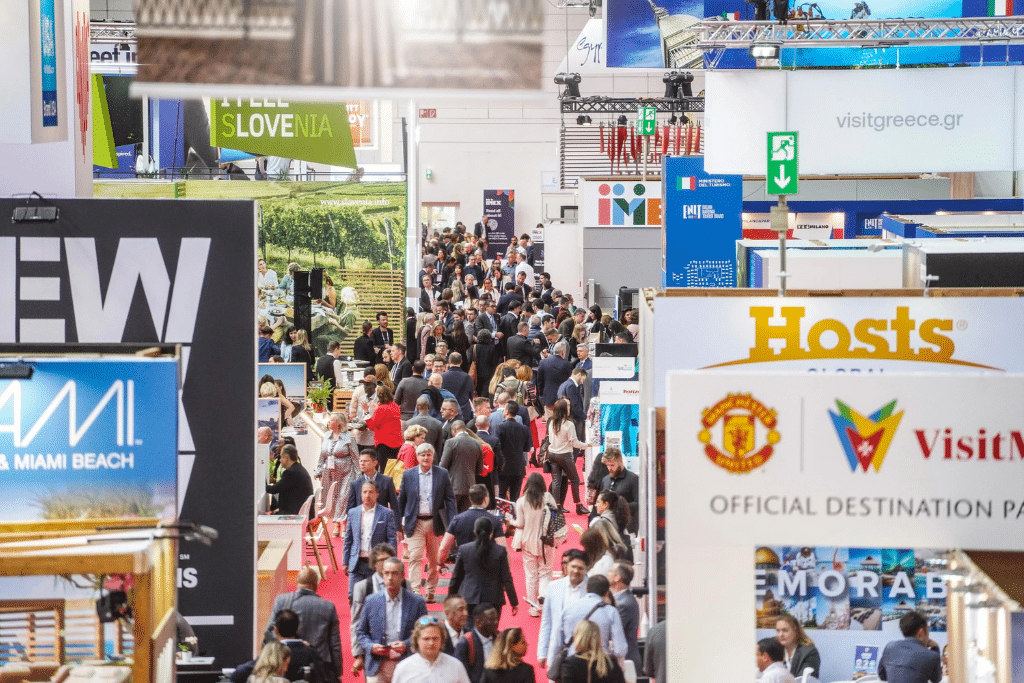Less is more
I have been giving this tremendous thought from the perspective of organising sustainable events and promoting destinations. Less is more is a concept that advocates quality over quantity, regeneration, producing less waste and reducing the detrimental effects prompted by event organisers.

Hence, I predict a bright future for destinations that have or will know how to find their purely authentic story. Destinations that will realise less is more and embark on their unique path. Think of the legendary Mick Jagger, for instance. He is arguably not the embodiment of beauty or the best singer. He does have charisma and energy, though, that the world’s “oldest” rock band needs. We could also say the same for the brutalist architecture we are sometimes ashamed of in New Europe. I believe such architecture is there for a reason and that it should not be demolished but reconstructed.
The minimalism I am writing about means that a city need not be designed and polished down to the last detail. Fascinating destinations are layered with history, architecture, cuisine, culture and way of life. When event organisers see and understand them as a holistic entity, they can find what they need for their events.

“We have evolved into an impotent meetings industry that claims it is creative, whereas, in reality, it is all about logistics.”
When a destination understands that, it has an excellent basis to build its identity or brand. The latter is always a construct, a story crafted and adapted to the times. Something that always rebuilds and transforms itself. Destinations with a clear identity are often among the most successful ones. To illustrate, I will use an example cited countless times – Vienna. The Viennese brand remains fluid and hybrid by connecting social, economic and national differences in the city. Their narrative always complies with elements of tradition and history that fit like a puzzle into the final story. A few keywords from their strategy, including Quality of Life, Place and Experience, Premium, Cosmopolitan and Digital, tell about their inclusive approach.
Among European destinations, Vienna seems to embody Armani’s philosophy within the meetings industry – a prototype of refined destination marketing and branding. As a result, Vienna has been at the top for decades. You can read more about their success in the following article.
Only a handful of destinations understand this. We are in the second year post-pandemic, which reshaped the meetings industry as we knew it. After COVID-19, I anticipated a renaissance of destination marketing. I regularly follow such campaigns out of personal interest and because original creativity inspires me. Alas, I can count best practice cases on the fingers of one hand. I have heard my share of (over)ambitious sustainable promises by destinations which they don’t even believe themselves. Such destinations are incapable of measuring their regenerative effects. I have read countless inept texts evidently written by AI and certainly not proofread by humans. Likewise, I have watched a sea of (multi)potent destination videos practically viewless because of the poor quality. In a way, we have evolved into an impotent meetings industry that claims it is creative, whereas, in reality, it is all about logistics, i.e. transporting event attendees from point A to point B.
That is one of the reasons I am eager for this year’s IMEX. I hope the event will be a positive surprise, revitalising the industry and prompting me to be in awe. More importantly, I hope exhibitors will know how to explain why their destination, meetings centre or agency is “little more than nothing” instead of selling square metres. I hope they will have the courage to explain how they can help me organise my event sustainably instead of rambling about planting trees and sustainable fairytales. I earnestly hope they can explain how we can leave a positive legacy for society, the environment and event attendees. Above all, I hope at least one destination’s branding, logo or appearance at the trade show and their answer to the question why will impress me so much that the destination will land on my priority list privately and business-wise.
For me, IMEX 2024 represents a milestone because it will help me discern whether our industry is a creative or logistic one. At the minute, AI still cannot replace Armani’s or someone else’s creativity. However, it has been solving logistical problems for some time, all the while learning lightning-fast. You can trust IBM’s word, not ours. The tech giant will lay off 8,000 employees in marketing and communication this year due to AI. All this is just the beginning, so I still hope to meet professionals at events from flesh and blood and not distant holograms for now.
Editorial by Gorazd Čad














